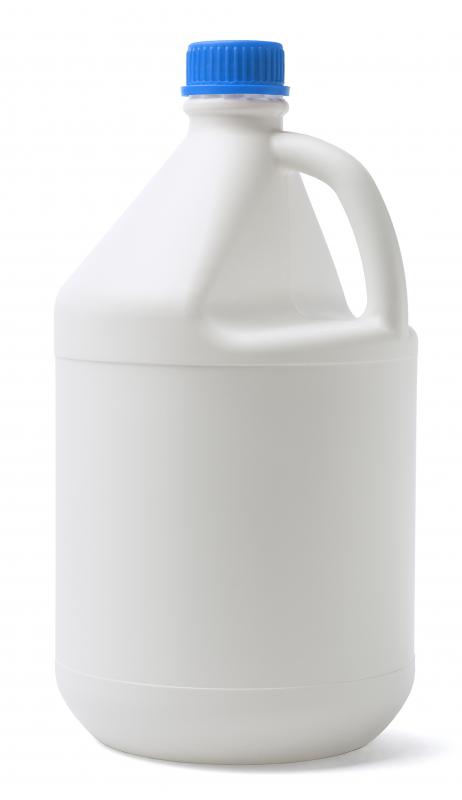At HomeQuestionsAnswered, we're committed to delivering accurate, trustworthy information. Our expert-authored content is rigorously fact-checked and sourced from credible authorities. Discover how we uphold the highest standards in providing you with reliable knowledge.
What Are the Most Common Rose Diseases?
Roses can develop diseases that cause damage to the flowers and foliage. Blackspot, Botrytis blight, and powdery mildew are common rose diseases that are caused by fungus. Rose rust, another fungal disease, causes red rust-like spots on the foliage. Rose mosaic is a disease that commonly attacks roses and is caused by a virus. Crown gall is another disease that attacks roses on their woody stem areas.
Blackspot is one of the most common rose diseases caused by a fungus. The fungus can lay dormant until high temperatures mixed with humidity causes the fungus to spread. Black spot disease causes black circles on the foliage and stems, and is treated using antifungal soap sprays.

Botrytis blight is caused by a fungus that attacks the developing flower buds. A rose infected with this disease drops developing buds prematurely and existing buds turn brown on the plant. When a rose is infected with Botrytis blight, all the infected plant material should be removed and destroyed.
Powdery mildew also attacks roses, causing developing leaves and buds to wither and discolor. Pruning off the infected material helps to prevent the disease from spreading. Early stages of the disease can be treated with fungicidal sprays.

Common rose diseases include rose rust as well. This disease is caused by a fungal infection that produces rust-like patches on the undersides of rose leaves, and early detection can prevent the disease from spreading to the top sides of the leaves. Rose rust can be successfully treated with fungicidal sprays when caught and treated early.
Rose mosaic is one of the more common rose diseases caused by a virus. The virus attacks the foliage, causing a yellow discoloring and stunted growth. Rose mosaic is spread by grafting infected plants to non-infected plants. As the disease does not spread on its own from plant to plant, roses with rose mosaic can be left in the garden. The only way to get rid of the disease, however, is to dispose of the infected plant.

Another disease called crown gall is one of the common rose diseases that attacks the stalks of rose plants. It is caused by a bacteria that attacks roses and other plants with woody stems. The disease is spread between plants through the use of pruning shears that are infected with the bacteria. Roses and other woody plants are likely to develop crown gall on areas that are damaged or at the site of a pruning wound. To prevent spreading, pruning shears should be sanitized after working on an infected plant.
AS FEATURED ON:
AS FEATURED ON:














Discussion Comments
@lighth0se33 – They are the most disease resistant roses, but they can still get black spot. I have had this problem on every type of rose bush I've ever planted.
We have really hot, humid summers where I live, so it's unavoidable. I start to see the black spots on the leaves in July, and if I don't treat them right away, they start to develop yellow rings around them.
I buy a natural spray that is nontoxic to animals and is designed to treat black spot. Watering them in the morning instead of at night helps, because this gives the leaves time to dry off.
Do knockout roses get diseases, too? I've heard that they are suppose to be disease resistant, but I find it hard to believe that they are immune to everything. I've been thinking about getting some, because I really don't have time to deal with plants that require a lot of maintenance.
@seag47 – I was reading about roses and their diseases and treatments last year, because my rose bush was having issues. I discovered that it had crown gall, but it wasn't a fatal disease.
The article said that I should dig it up, cut off the crown gall, remove a bunch of the dirt, and replace it with fresh dirt. I also had to spray bleach diluted with water on the parts of the bush where I had cut the crown gall off.
It worked, because my rose bush started to flourish. It was a pretty simple treatment for something that looked so awful. My rose basically had a giant tumor at its base.
Does crown gall kill the entire rose bush? It seems to me that if the crown were infected, then the entire plant would be affected.
Post your comments